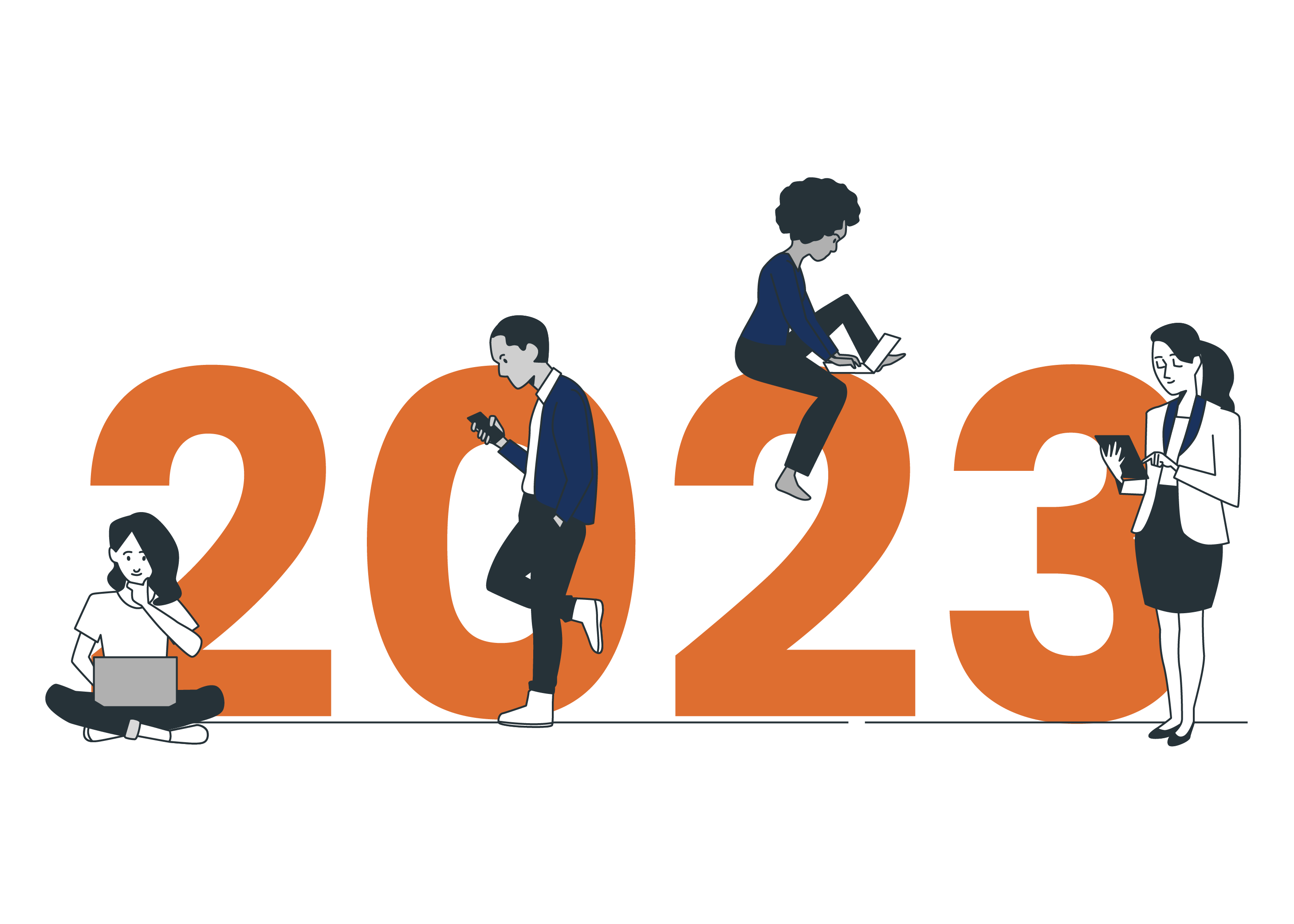What will make a vocational institute successful in 2023?

We are thrilled to let you know that the global technical and vocational education market size was valued at USD 622.4 billion in 2021 and is expected to expand at a CAGR (compound annual growth rate) of 9.8% by 2030!
With the growing demand for vocational education, the need for vocational institutes to perform and stay ahead of the curve is pivotal. But before head-starting the race, it is important to know the factors responsible for this sudden urgency.
The 7 principal factors responsible for this rapid growth:
- Rising demand for skilled people
- Growing recognition of vocational education
- Affordable cost of vocational courses
- Advancement in corporate training practices
- Increased AI-based education
- Rapid technological advancements
- Government initiatives and funding to fill the skill gap across industries
After knowing the above points you must now have a rough idea of the direction in which you need to think. However, you need a strong execution plan with an insightful approach.
Following are the 4 strategies that you can put into practice to make your vocational institute successful in 2023:
Demand-based courses

Offering courses based on current industry demands and relevant to the job market ensures your strong market presence, hence increasing the overall admissions. To execute this it’s critical to know about the bifurcation of courses and the current trends in the vocational education industry.
Insights on demand-based courses
Based on course type segments, the vocational industry is categorised into STEM (Science, Technology, Engineering, Medical) education and non-STEM education.
As per the report of Grandview research,
- The STEM course type segment dominated the global industry in 2021 and accounted for the largest share of more than 77.00% of the overall revenue.
- The non-STEM education course type segment is estimated to register the highest growth rate during the forecast period. Non-STEM comprises courses like finance, accounting, fashion, management, etc. It is a vast field compared to the STEM field and courses.
Looking at this data and diving a little deeper into the market we can configure the below points:
- By offering a diverse range of courses, you can attract a wider range of students with varying interests and career goals.
- Offering a mix of STEM and non-STEM courses can diversify your revenue streams, helping to ensure financial stability even in the face of changes in the job market or economic conditions.
- STEM courses are in high demand, and offering these courses can help the institute stay relevant and current with the job market.
- Non-STEM courses are diverse and vary depending on individual choices and the job market.
Strong industry partnerships

As we can see the world’s leading companies are using partnerships, and collaborations, as a strong strategy to withstand the intense competition, and so do the vocational industry.
Vocational education providers, like you, can be benefitted from the extensive research and development activities to:
- Incorporate new technologies in your offerings.
- Develop advanced courses to gain a competitive advantage over others.
- Provide internships, apprenticeships, and other opportunities to your students.
- Ensure your institute’s programs are up to date and relevant to the market demands
- Develop innovative instructional methods
Insights on strong industry partnerships
Below mentioned are a few of the prominent international, government-oriented and local tie-ups:
- Auto-component maker SKF tied up with Tata Community Initiatives Trust (TCIT) to explore and develop skill development initiatives through ‘Tata STRIVE.’
Under this partnership, SKF India and Tata STRIVE jointly developed and delivered vocational training courses for unemployed and employed young people within their operational areas. - STC Group, a corporate-focused skill development company tie-up with NSDC (National Skill Development Corporation) to provide vocational training to 50,000 candidates.
- The 12th edition of the Indo-German joint working group meeting held in December 2022 aims to institutionalise a standard mechanism for VET to meet the skill requirements in priority sectors as per German standards.
- Vocational education will now be given to students of classes 9 to 12 on the model of “One District, One Product” (ODOP) in new schools applying for recognition from the U.P. Board.
Technical Advancement

Technical advancement is very essential for any vocational institute as it provides numerous benefits to help your institute keep up with industry demands. It will improve the quality of education, attract a diverse student body, streamline operations, and meet accreditation standards.
Tech-assisted vocational training provides you with the chance to build interactive courseware using advanced multi-media tools. Additionally, the students will also get technologically competent.
Insights on Technical Advancements
Some emerging technologies in vocational education are:
- Adaptive Learning: Adaptive learning allows personalising the learning experience of each student. Additionally, it can provide real-time feedback to students, allowing them to quickly address any misunderstandings and correct any mistakes. This will increase student motivation and engagement, actionable to see their progress and receive immediate reinforcement for their efforts.
- Artificial intelligence: AI enhance the skill development of students especially in technical courses by providing them with hands-on experience and access to advanced tools and technology. This will prepare students for the changing technological landscape and provide them with the skills they need to succeed in the workforce. Hence pulling off the interest of maximum interest for your institution.
- Augmented (AR) and Virtual Reality (VR): AR and VR provide students with immersive, interactive learning experiences that help to deepen their understanding of complex concepts and improve their retention of information. The students can then visualise and interact with abstract ideas in ways that are not possible with traditional learning methods.
- Internet of things: IoT is becoming increasingly important in the vocational industry as a means of connecting devices and systems, sharing data, and automating tasks. IoT improves maintenance, reduces downtime, and optimises processes in vocational fields that provide courses in transportation, energy, and manufacturing.
- Digitisation and Data Analytics: Digitisation and data analytics are transforming the vocational industry by providing new tools such as vocational CRM for tracking and analysing performance, identifying areas for improvement, and making data-driven decisions. This will optimise processes, improve quality, and increase efficiency.
Increase Fund Allocation

Fund allocation is a critical aspect to stay ahead of the curve as it allows you to invest in the latest tools, technologies, and resources. As a blooming vocational institute, you need access to the latest technology and equipment, which can deliver hands-on learning experiences that are relevant and engaging. Through mindful investing, you can drive economic growth, innovation, and competitiveness, to ensure a strong foothold in the education market.
Insights on ways to increase fund allocation
By pursuing a combination of the below-mentioned strategies you can raise adequate funds:
- Grant Writing: N.S. Kalsi, Chairperson, NCVET said, “To address the skill deficit, India needs to extend high technical and vocational courses to improve employability.” The government is trying to improve the level of skill development, and this is your sign to raise the bar high!
- You can apply for grants from government agencies, foundations, and other organizations that support education and training initiatives. This will secure additional funding for specific programs, research projects, or capital improvements.
- Fundraising Campaigns: You need to launch fundraising campaigns to engage alumni, businesses, and members of the community in supporting education and training. This includes events, donations, and other initiatives that help to raise awareness and build support for the institute.
- Public-Private Partnerships: You can forge partnerships with local businesses and industries to secure funding and support for education and training initiatives. This includes collaborations on research projects, internships, and other programs that help to align education and training with the needs of the local economy.
- Fees Structure: You can increase funding by adjusting tuition and fee structures to better reflect the cost of education and training. This includes expanding the range of programs and courses offered and exploring alternative financing options to make education more accessible and affordable.
- Cost Savings and Efficiency Measures: Implementing cost savings and efficiency measures, such as reducing energy consumption, improving procurement processes, and streamlining administrative operations can be a great way. By lowering costs and improving efficiency, you can free up additional resources for investment in education and training initiatives.
Final Words
As the economy continues to evolve and new technologies emerge, vocational institutes will play a critical role in ensuring that the workforce is equipped with the skills and knowledge needed to succeed in the 21st century. A successful vocational institute in 2023 will be one that is dedicated to delivering high-quality education and training, fostering innovation and technological advancement, and responding to the needs of students and the wider community.
By investing in technology, research and development, and the attraction and retention of top faculty, you can ensure that you are delivering education and training that is relevant and responsive to the needs of the marketplace. At the same time, effective fund allocation strategies and cost-saving measures will help you to secure the funding you need to support these initiatives and stay ahead of the curve.


